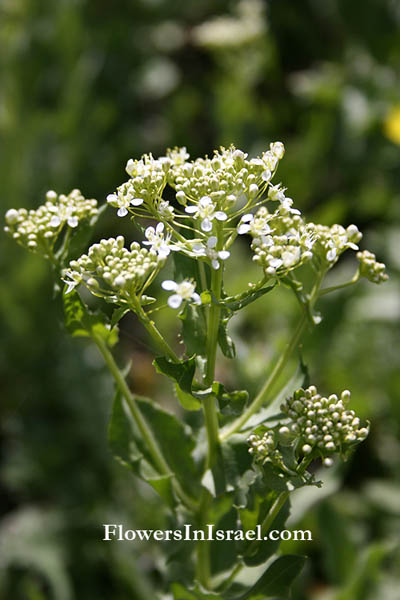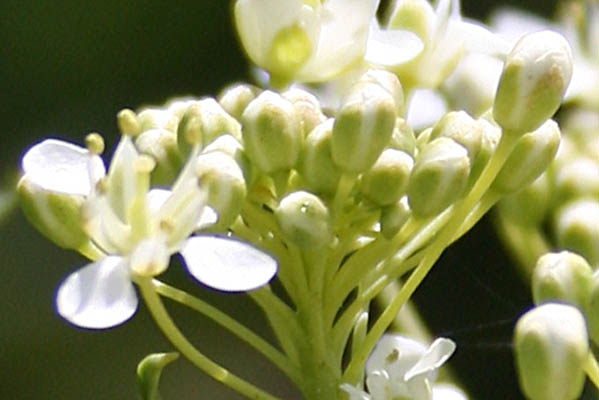Hebrew: קרדריה מצויה, Arabic: فنبيرة
| Scientific name: | Cardaria draba(L.)Desv. | |
| Synonym name: | Lepidium draba L. | |
| Common name: | Heart-Podded Hoary Cress, Whitetop, Perennial peppergrass, Cranson dravier | |
| Hebrew name: | קרדריה מצויה | |
| Arabic name: | فنبيرة | |
| Plant Family: | Cruciferae / Brassicaceae, מצליבים |

|
| Life form: | Annual | |
| Stems: | Up to 75 cm high; erect, branching near the top; covered with fine downy hairs, are longitudinally ribbed | |
| Leaves: | Alternate, entire, dentate or serrate; usually covered with fine, white hairs giving a hoary appearance | |
| Flowers: | White, fragrant, 4 petals, numerous in terminal clusters | |
| Fruits / pods: | Heart-shaped capsule | |
| Flowering Period: | March, April, May | |
| Habitat: | Batha, Phrygana, Shrub-steppes | |
| Distribution: | Mediterranean Woodlands and Shrublands, Semi-steppe shrublands, Shrub-steppes, Montane vegetation of Mt. Hermon | |
| Chorotype: | Med - Irano-Turanian | |
| Summer shedding: | Ephemeral |

Derivation of the botanical name: Cardaria, from the Greek word kardia (heart), and refers to the heart-shaped fruit of Cardaria draba. However, not all the fruit in this genus are heart-shaped. draba, from the Greek drabe, sharp or acrid and refers to the burning taste of the leaves. Lepidium, from the Greek lepidion, small scale, in allusion to the flat shape of its fruits.
|